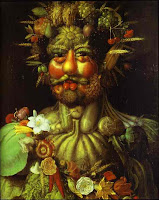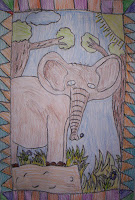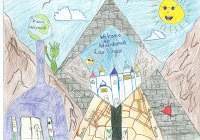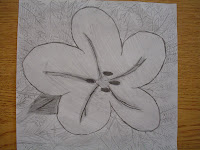
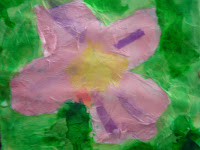
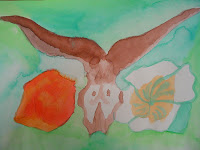
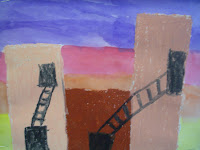
Miss Liza Camhi
Art Unit
Georgia O’Keeffe
Grade: 5th
# of lessons: 3
Art Resources: Artists in Their Time Georgia O’Keeffe by Ruth Thomson, examples of pueblos and adobe homes in photographs, photographs or actual animal skulls, examples of Georgia O’Keeffe’s flower paintings, pictures of flowers, and teacher products.
Art Materials:1 sheet of white 9”x12” paper per student, watercolors, water cups, pencils, paintbrushes, glue, 2 sheets of 8”x8” white paper per student, 1 11”x14” sheet of black paper, cups of glue and water mixed together, oil pastels, and 1 11”x14” sheet of white paper.
Objectives-
Student will:
- create a multimedia southwestern landscape
- create an observational collage and pencil drawing of a flower
- create a painting of animal bones of flowers
- learn about the process of collaging- use various watercolor techniques
- shade using a pencil and create a grayscale
- draw using oil pastels
- learn about the life and art of Georgia O’Keeffe
- work in groups and individually
Interdisciplinary Connections: Science and Social Studies
Vocabulary: Georgia O’Keeffe, still life, landscape, Southwest, grayscale, shade, and adobe.
Lessons: The unit will consist of the following components:
A. Multimedia Adobe Landscape- Each student will paint a watercolor sunset on 9”x12” sheets of white paper. The student will then draw adobe homes using oil pastel.
B. Georgia O’Keeffe Flower Study- Each student will create an 8 square grayscale using pencil on strips of scrap white paper. Student will share a photograph of a flower with a group of 3 students and individually draw/shade a flower composition on 8’x8” white paper in pencil. Then he will redraw the outline of his flower composition on another 8”x8” white sheet of paper and collage with tissue paper scraps. Student will mat his work on 11”x14” black paper with glue.
C. Flower and Bones Painting- Student will draw in pencil on 11”x14” white paper a skull and a flower from studying photographs. Student will paint the picture using watercolors.
